Medically reviewed by Dr. Ramesh Gaddam, M.D. — Written by Sumalatha, D.N.H.E
Mayonnaise is a thick and creamy condiment that is made by emulsifying oil, egg yolks, and vinegar or lemon juice. It has a smooth texture and a tangy flavor. Mayonnaise is a versatile ingredient commonly used in various culinary applications.
Uses of Mayonnaise
Some common uses include:
Sandwiches and Burgers:
Mayonnaise is a popular spread for sandwiches and burgers, adding creaminess and flavor.
Salad Dressings:
It serves as a base for many salad dressings, enhancing the texture and taste of salads.
Dips and Sauces:
Mayonnaise is a key ingredient in various dips and sauces, such as aioli, remoulade, and Thousand Island dressing.
Coating for Frying:
It can be used as a coating for fried foods, providing a crispy and golden exterior.
Binding Agent:
Mayonnaise is often used as a binding agent in dishes like coleslaw, potato salad, and tuna salad.
Marinades:
It can be included in marinades for meat and poultry, contributing to both flavor and moisture retention.
Baking:
Mayonnaise can be used in baking to add moisture to cakes and quick breads.
Its adaptability and rich texture make mayonnaise a versatile ingredient in both savory and sweet dishes, contributing to a wide range of culinary creations.
Reasons for Seeking Substitutes:
People may seek substitutes for mayonnaise for various reasons, including dietary preferences, health concerns, allergies, and taste preferences. Here are some common factors:
Veganism:
Traditional mayonnaise contains eggs, making it unsuitable for those following a vegan diet. Vegan mayonnaise substitutes are typically plant-based, using ingredients like soy protein, pea protein, or aquafaba (the liquid from canned chickpeas) to achieve a similar creamy consistency without animal products.
Vegetarianism:
While vegetarians may not have issues with eggs, some may prefer egg-free options or those with fewer animal-derived ingredients.
Health Concerns:
Calorie or Fat Reduction:
Traditional mayonnaise is relatively high in calories and fat. Individuals seeking to reduce their calorie or fat intake may opt for lighter versions or substitutes that use alternative ingredients with lower fat content, such as Greek yogurt or low-fat sour cream.
Cholesterol Control:
For those watching their cholesterol levels, traditional mayonnaise may be replaced with alternatives that are lower in cholesterol or contain heart-healthy fats.
Allergies:
Egg Allergies:
Individuals with egg allergies may need to avoid traditional mayonnaise. Egg-free substitutes or homemade versions using egg alternatives like aquafaba can be suitable alternatives.
Soy Allergies:
Some commercial mayonnaise substitutes may contain soy-based ingredients. Those with soy allergies may need to seek soy-free options, like coconut or avocado oil-based alternatives.
Taste Preferences:
Some people simply prefer the taste of alternative spreads or dressings over traditional mayonnaise. Substitutes can provide a different flavor profile, such as tangy yogurt-based dressings, mustard-based sauces, or avocado-based spreads.
Cultural or Regional Preferences:
In certain cuisines, traditional mayonnaise may not be a common ingredient. People from these cultures might opt for substitutes that align better with their culinary traditions.
Ultimately, the choice of a mayonnaise substitute depends on individual needs, preferences, and dietary restrictions, allowing for a wide range of options to cater to diverse tastes and health considerations.
Nutrition of Mayonnaise:
Traditional mayonnaise is a condiment that provides a rich and creamy texture to various dishes. Here’s a brief overview of the nutritional content of a standard serving size (1 tablespoon) of traditional mayonnaise:
Calories:
Approximately 90 calories per tablespoon.
Fat:
Mayonnaise is relatively high in fat, with around 10 grams of fat per tablespoon. The fat content is primarily derived from vegetable oil, which is a key ingredient in mayonnaise.
Cholesterol:
Mayonnaise contains cholesterol, typically around 5-10 milligrams per tablespoon. The cholesterol content comes from the egg yolks used in the emulsification process.
Health Considerations:
Following are the health considerations of Mayonnaise:
Caloric Density:
Due to its high calorie and fat content, traditional mayonnaise can contribute significantly to caloric intake. Moderation is advised, especially for those watching their calorie intake or trying to maintain a healthy weight.
Fat Content:
The majority of the fat in mayonnaise comes from vegetable oils, which can be a source of unsaturated fats. However, some may contain saturated fats depending on the type of oil used.
Too much saturated fat in the diet may contribute to elevated cholesterol levels and cardiovascular issues, so it’s essential to be mindful of overall dietary fat intake.
Cholesterol:
While the cholesterol content in mayonnaise is relatively low compared to some other sources, individuals with dietary restrictions or concerns about cholesterol intake may need to monitor their consumption.
Ingredients and Processing:
Commercially available mayonnaise often contains additives, preservatives, and stabilizers. Some people may be sensitive to these ingredients or prefer to minimize their intake of processed foods.
Dietary Preferences:
For those following specific diets, such as vegan or plant-based diets, traditional mayonnaise may not be suitable due to its egg content. Alternatives like vegan mayonnaise or homemade versions with plant-based ingredients can address this concern.
Healthy Mayonnaise Substitutes
Mayonnaise substitutes offer a versatile range of options for individuals with dietary restrictions, health concerns, or those simply seeking alternative flavors and textures. Here are some popular mayonnaise substitutes and the reasons people may choose them:
1. Greek Yogurt:
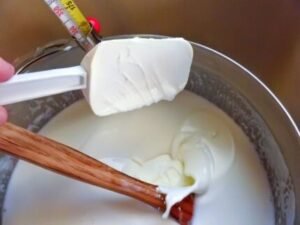
Greek yogurt is a popular, healthier substitute for mayonnaise. Its creamy texture and tangy flavor make it suitable for salads, dressings, and dips. It is a good source of protein and probiotics, making it a nutritious choice.
2. Avocado:

Mashed avocado is an excellent substitute that adds a creamy texture and a boost of healthy fats to dishes. It is particularly favored in sandwiches, wraps, and as a base for creamy sauces or dressings.
3. Hummus:

Hummus is a flavorful and protein-rich alternative to mayonnaise. Its unique taste makes it suitable for sandwiches, wraps, and as a dip. Hummus also provides dietary fiber and various micronutrients.
4. Sour Cream:

Sour cream offers a tangy flavor and smooth texture, making it a versatile substitute for mayonnaise in various recipes. It is commonly used in salads, dressings, and dips.
5. Mustard:
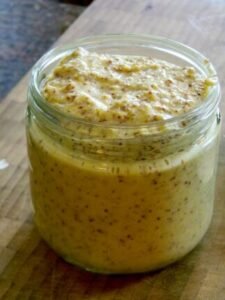
Mustard, especially Dijon or whole-grain varieties, can add a zesty kick to dishes while serving as a lower-calorie alternative. It is a popular choice for sandwiches, marinades, and salad dressings.
6. Pesto:

Pesto, made from basil, pine nuts, Parmesan cheese, garlic, and olive oil, introduces a burst of flavor to dishes. It is commonly used as a spread, sauce, or dressing in place of mayonnaise.
7. Coconut Milk or Coconut Cream:
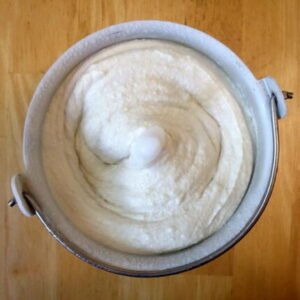
In recipes with a tropical or Asian influence, coconut milk or cream can provide a rich and creamy substitute for mayonnaise, adding a unique flavor to the dish.
8. Mashed Silken Tofu:

Mashed silken tofu can be used as a vegan substitute for mayonnaise, providing a creamy texture without animal products. It is often used in dressings, dips, and spreads.
9. Low-Fat or Greek Yogurt-Based Dressings:
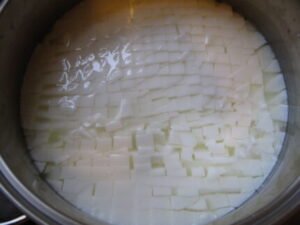
Commercially available low-fat or Greek yogurt-based dressings provide a convenient and flavorful alternative to traditional mayonnaise. These products often offer a balance between taste and nutritional considerations.
When selecting a mayonnaise substitute, individuals consider factors such as dietary preferences, health goals, taste preferences, and the specific requirements of a recipe.
The diverse range of substitutes allows for flexibility in adapting dishes to meet various needs while maintaining flavor and texture.
Mayonnaise Disadvantages
Considerations and potential side effects are associated with consumption of Mayonnaise. It’s essential to be aware of these factors:
Calorie and Fat Content:
Traditional mayonnaise is relatively high in calories and fat. Excessive consumption can contribute to an increased calorie intake and may not be suitable for those aiming to manage their weight or reduce their fat consumption.
Cholesterol Content:
Mayonnaise contains cholesterol, primarily from the egg yolks used in its preparation. While the amount is not extremely high, individuals with specific dietary restrictions or concerns about cholesterol levels may need to monitor their intake.
Saturated Fat Content:
The type of oil used in mayonnaise can affect its saturated fat content. Some commercial mayonnaise products may contain oils with higher levels of saturated fats. Diets high in saturated fats may contribute to elevated cholesterol levels and cardiovascular issues, so moderation is key.
Allergies:
Mayonnaise contains eggs, and individuals with egg allergies should avoid traditional mayonnaise or opt for egg-free alternatives. Some store-bought mayonnaises may also contain other allergens, such as soy, so it’s important to check the ingredient list if you have allergies.
Additives and Preservatives:
Commercially produced mayonnaise often includes additives, preservatives, and stabilizers to enhance shelf life and maintain consistency. Some people may be sensitive to these additives, and they might experience digestive discomfort or other allergic reactions.
Processed Ingredients:
In some cases, mayonnaise made with highly processed oils or low-quality ingredients may not provide the same nutritional benefits as versions made with healthier oils and natural ingredients.
Digestive Issues:
Some individuals may experience digestive discomfort, such as bloating or indigestion, if they consume mayonnaise in large quantities. This could be due to the high fat content or the presence of certain additives.
Mayonnaise Substitute for Tuna
If you’re looking for a mayonnaise substitute for tuna, there are several alternatives that can add creaminess and flavor to your tuna salad while catering to different dietary preferences and health considerations. Here are some options:

Greek Yogurt:
Greek yogurt is a popular and healthier substitute for mayonnaise. It provides a creamy texture and adds a tangy flavor to the tuna salad. Choose plain, unsweetened Greek yogurt for the best results.
Avocado:
Mashed avocado is a fantastic, nutrient-rich substitute for mayonnaise. It adds a creamy texture and imparts a unique flavor to the tuna salad. Additionally, avocados are a good source of healthy fats.
Hummus:
Hummus can serve as a flavorful and protein-rich alternative to mayonnaise. It adds a unique taste to the tuna salad and works well if you’re looking for a Middle Eastern twist.
Mustard:
Dijon or whole-grain mustard can add a zesty kick to your tuna salad. Mustard is lower in calories and fat compared to mayonnaise, making it a healthier option.
Low-Fat or Fat-Free Greek Yogurt:
If you’re specifically watching your calorie and fat intake, opt for low-fat or fat-free Greek yogurt as a substitute for traditional mayonnaise.
Sour Cream:
Sour cream can be used as a creamy base for tuna salad. Choose a low-fat or Greek yogurt-based sour cream for a healthier option.
Lemon or Lime Juice:
For a lighter and citrusy alternative, consider using fresh lemon or lime juice. It adds a refreshing flavor without the added calories or fat.
Pesto:
If you’re looking to infuse a burst of flavor into your tuna salad, consider using pesto. It’s a combination of basil, pine nuts, garlic, Parmesan, and olive oil.
Experiment with these substitutes and combine them to create your preferred flavor profile. Adjust the quantities based on your taste preferences and dietary requirements.
Additionally, you can incorporate crunchy vegetables, fresh herbs, or other seasonings to enhance the overall taste of your tuna salad.
Japanese mayonnaise substitute
Japanese mayonnaise has a distinct flavor and texture, and while it can be challenging to replicate precisely, you can create a similar experience with some substitutes. Japanese mayonnaise typically has a sweeter and slightly tangier taste compared to Western mayonnaise. Here are a few alternatives you can try:
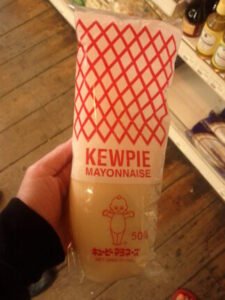
Kewpie Mayo:
Japanese Brand Mayo: If possible, consider using Kewpie mayonnaise, a popular Japanese brand known for its unique flavor and creaminess. It can often be found in Asian grocery stores.
Homemade Substitute:
- Ingredients:
- 1 cup regular mayonnaise
- 1 tablespoon rice vinegar
- 1 tablespoon soy sauce
- 1 teaspoon sugar
Instructions:
- Whisk together all the ingredients until well combined.
- Adjust the sugar, soy sauce, or vinegar to achieve the desired balance of sweetness and tanginess.
Sweetened Mayo with Rice Vinegar:
- Ingredients:
- 1 cup regular mayonnaise
- 1 tablespoon rice vinegar
- 1 tablespoon sugar
Instructions:
- Combine the mayonnaise, rice vinegar, and sugar in a bowl.
- Stir well until the sugar is dissolved, and the mixture is smooth.
Yuzu Mayo:
- Ingredients:
- 1 cup regular mayonnaise
- 1 tablespoon yuzu juice (or a mix of lemon and lime juice)
Instructions:
- Mix the mayonnaise and yuzu juice in a bowl.
- Adjust the quantity of yuzu juice to achieve the desired citrusy flavor.
Miso Mayo:
- Ingredients:
- 1 cup regular mayonnaise
- 1 tablespoon white or light miso paste
Instructions:
- Combine the mayonnaise and miso paste in a bowl.
- Whisk until the miso is fully incorporated.
Experiment with these alternatives and adjust the ingredient quantities to match your taste preferences. Japanese mayonnaise often accompanies dishes like sushi, takoyaki, or okonomiyaki, so consider the specific flavors of the dish when choosing a substitute.
Medically reviewed by Dr. Ramesh Gaddam, M.D.

General Physician, Diabetologist, and Critical Care Specialist.
Discover more from Health Build-Up
Subscribe to get the latest posts sent to your email.
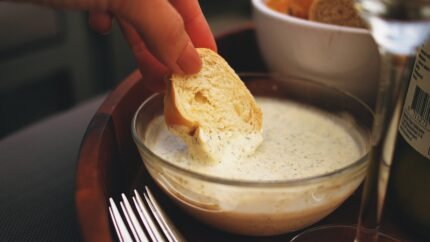

2 thoughts on “11 Only Healthy Mayonnaise Substitutes (Tasty Alternatives)”
Comments are closed.